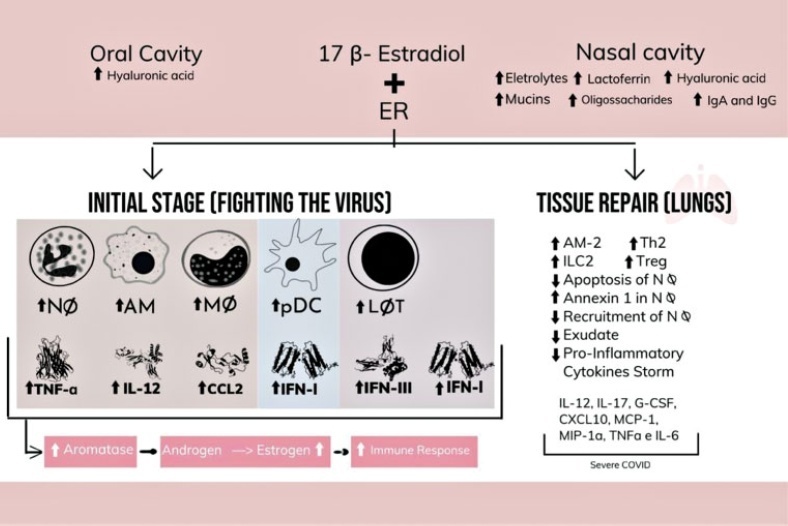Summary
Revista Brasileira de Ginecologia e Obstetrícia. 06-01-2022;44(6):567-572
To compare death rates by COVID-19 between pregnant or postpartum and nonpregnant women during the first and second waves of the Brazilian pandemic.
In the present population-based evaluation data from the Sistema de Informação da Vigilância Epidemiológica da Gripe (SIVEP-Gripe, in the Portuguese acronym), we included women with c (ARDS) by COVID-19: 47,768 in 2020 (4,853 obstetric versus 42,915 nonobstetric) and 66,689 in 2021 (5,208 obstetric versus 61,481 nonobstetric) and estimated the frequency of in-hospital death.
We identified 377 maternal deaths in 2020 (first wave) and 804 in 2021 (second wave). The death rate increased 2.0-fold for the obstetric (7.7 to 15.4%) and 1.6-fold for the nonobstetric groups (13.9 to 22.9%) from 2020 to 2021 (odds ratio [OR]: 0.52; 95% confidence interval [CI]: 0.47–0.58 in 2020 and OR: 0.61; 95%CI: 0.56– 0.66 in 2021; p < 0.05). In women with comorbidities, the death rate increased 1.7-fold (13.3 to 23.3%) and 1.4-fold (22.8 to 31.4%) in the obstetric and nonobstetric groups, respectively (OR: 0.52; 95%CI: 0.44–0.61 in 2020 to OR: 0.66; 95%CI: 0.59–0.73 in 2021; p <0.05). In women without comorbidities, the mortality rate was higher for nonobstetric (2.4 times; 6.6 to 15.7%) than for obstetric women (1.8 times; 5.5 to 10.1%; OR: 0.81; 95%CI: 0.69–0.95 in 2020 and OR: 0.60; 95%CI: 0.58–0.68 in 2021; p <0.05).
There was an increase in maternal deaths from COVID-19 in 2021 compared with 2020, especially in patients with comorbidities. Death rates were even higher in nonpregnant women, with or without comorbidities.
Summary
Revista Brasileira de Ginecologia e Obstetrícia. 01-24-2021;43(12):940-948
Women have metabolic, immunological, and genetic variables that ensure more protection from coronavirus infection. However, the indication of treatment for several pathologies and contraception is determined by hormones that have adverse effects and raise doubts about their use during the COVID-19 pandemic. Therefore, the present study searches women specificities and the relation between female sexual hormones and COVID-19, and reports the main recommendations in this background. To this end, a review of the literature was conducted in the main databases, auxiliary data sources, and official websites. Therefore, considering the hypercoagulability status of COVID-19, the debate about the use of contraceptives due to the relative risk of thromboembolic effects that they impose arises. However, the current available evidence, as well as the recommendations of main health organs around the world, demonstrate that the use of hormonal contraceptives must be maintained during the pandemic.

Summary
Revista Brasileira de Ginecologia e Obstetrícia. 07-30-2021;43(5):374-376
To analyze effects of the COVID-19 pandemic on the consumption of personal protective equipment and products (PPEP), as well as the frequency of surgical site infection (SSI) among non-COVID-19 patients submitted to cesarean sections.
A retrospective study was conducted in a maternity unity of a public teaching hospital which was not part of the reference service for COVID-19 treatment. It compared PPEP consumption and the occurrence of SSI after cesarean sections in monthly periods before and after the occurrence of the first case of COVID-19 in Porto Alegre, state of Rio Grande do Sul, Brazil. Personal protective equipment and products consumption was measured as units of masks, gloves, gowns, and caps, and use of alcohol-based products or soap for hand sanitation asml/patient/day. The SSI index was calculated as the proportion of cases of SSI over the number of cesarean sections performed monthly during the study period.
There was an increase in all measured items of PPEP, with consumption of disposable masks with a median of 1,450 units in the pre-COVID period, and of 2550 in the post-COVID period (a 75.9% increase). A decrease of 49% in SSI was detected, with a median of 1.74 in the pre-COVID period and of 0.89 in the post-COVID period.
The increase in consumption of PPEP could be a result of safer practices adopted by healthcare workers with the advent of COVID-19, of which the following reduction in the occurrence of SSI could be a direct consequence. Despite the severity of the crisis, one could state that extreme situations can lead to valuable reflections and opportunities for improvement.